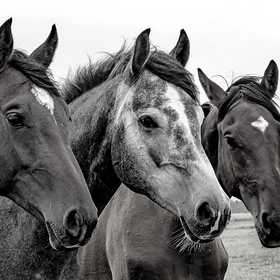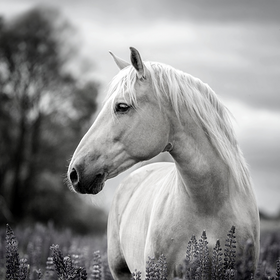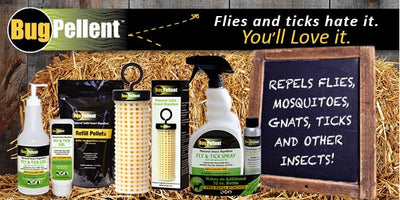
Common Plants that are Toxic for Horses
Many plants naturally occurring in your horse's environment can make them very sick. In most cases, horses will avoid toxic plants because many have bitter flavors. However, knowing what plants can be harmful and removing them from your horse's pasture and environment can help keep them safe and healthy. Unfortunately, many plants are dangerous for horses. We’ve compiled a list of some of the most common toxic plants to make identification easier.

Bracken Fern
Bracken fern is one of the few toxic plants many horses will eat. When small quantities are eaten regularly, Bracken fern will cause thiamine deficiency. Thiamine deficiency results in blindness, depression, weight loss, and uncoordinated gait. Larger quantities can be fatal. Occasionally, bracken fern is chopped up in the hay. Bracken fern in the hay will take longer to cause a thiamine deficiency. Diagnosis is pretty straightforward as your veterinarian can test for thiamine deficiency and treatment can include thiamine injections in severe cases. Always make sure the hay you buy is from a farm with no bracken fern on the property.

Oleander
Oleander is a large tree or hedge-like bush often used in landscaping. It's a very hardy plant, so it's hard to kill. This drought-tolerant plant is widespread in the Southwest. Every part of the oleander plant is highly toxic to horses, as the plant contains cardiac glycosides. If horses ingest the roots, leaves, stems, seeds, fruit, or flowers of the plant, veterinary attention is needed right away. As little as one ounce can be lethal to horses, depending on the size of the horse. Sudden symptoms and a quick decline within 8-10 hours are common with oleander ingestion. Symptoms include colic, diarrhea, labored breathing, muscle tremors, and inability to stand.

Red, White & Alsike Clover
Alsike Clovers can be toxic to horses, while red and white clovers foster mold more easily, and thus can make horses ill. It is most common in the Northern United States and Canada. If your horse is exposed to Alsike clover for a short period, they may experience photosensitization. Photosensitization is when your horse's skin becomes sensitive to sunlight. This tends to affect areas with pink skin and white hair the most. Symptoms include bumpy, peeling, or reddened skin, oozing sores, and mouth sores. Long-term exposure will cause nitrate poisoning and liver damage. Horses consuming hay or fresh pasture with as little as 20% alsike clover can begin to show liver damage.

Pine
While pine is not as toxic as the other plants on our list, it is still slightly toxic to horses. Because it is so common and hearty, it’s worth mentioning the effects. Pine trees contain isocupressic acids, held in high levels in the tree's needles. Eating this acid can cause gastric distress and, in some cases, abortions in pregnant mares. In extreme cases, other long-term effects include central nervous system damage, renal damage, and death. The most toxic pine tree varieties are Ponderosa Pine, Norfolk Pine, Yew Pine, Monterey Pine, and the Lodgepole Pine.

Buckeye
Buckeye is a reasonably common shrub in North America. When ingested, all parts of this plant are highly toxic to horses, cattle, dogs, humans, and other animals. Drooling and diarrhea are the first symptoms of buckeye ingestion. If more is ingested or symptoms progress, you may notice muscle spasms, dilated pupils, coordination and neurological issues, muscle weakness, and seizures.

Pokeweed
Pokeweed is a common plant in North America, the Midwest, South, and parts of the West Coast. It is a poisonous plant to humans, dogs, horses, and livestock. Pokeweed poisoning is caused by the toxin phytolaccatoxin, which causes a burning sensation in the mouth, colic, and diarrhea. While the most poisonous part of the plant is the roots, the leaves have enough toxins to make animals sick.
If you are looking for additional resources about toxic plants, visit ASPCA. Learning to identify and remove poisonous plants from your horse’s pasture and surrounding areas can save you a lot of heartache. Additionally, it’s essential to survey your pastures after heavy storms. Even if you don’t have toxic plants in your field, debris can blow in and be consumed by your horse.






